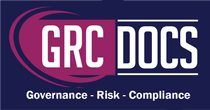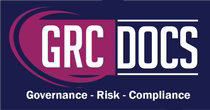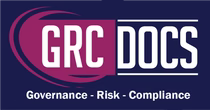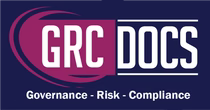What Is NIST CSF Compliance?
Introduction
Compliance with industry standards and regulations is paramount in the data security and protection world. One such standard that is widely recognized and followed is NIST compliance. The National Institute of Standards and Technology (NIST) is a government agency of the U.S. Department of Commerce that develops and promotes standards and guidelines to enhance the security and privacy of sensitive information. This article will delve into the details of NIST compliance, its significance, and how it can help businesses protect their data.

Understanding NIST Compliance
NIST compliance refers to the adherence to the standards and guidelines set forth by the National Institute of Standards and Technology (NIST). These standards and guidelines are designed to enhance the security and privacy of sensitive information, making them essential for businesses that handle sensitive data.
NIST compliance involves implementing comprehensive security controls and practices to protect data from unauthorized access, disclosure, alteration, and destruction. NIST compliance controls address various aspects of data security, including access control, encryption, incident response, and system monitoring. NIST assists federal agencies in aligning with the Federal Information Security Management Act (FISMA), which aims to protect government information and maintain the integrity of federal operations.
By complying with NIST standards, businesses can demonstrate their commitment to safeguarding sensitive information and gain the trust of their clients and partners. Additionally, NIST compliance can help organizations mitigate the risk of data breaches and avoid costly penalties for non-compliance with relevant regulations.
Types Of NIST Compliance Frameworks
To assist enterprises in managing cybersecurity risks, enhancing data security, and upholding national security standards, the National Institute of Standards and Technology (NIST) provides a number of compliance frameworks, particularly for government agencies and contractors. Because of their thorough standards and adaptable approach, these frameworks are frequently used throughout sectors.
1. The NIST Framework For Cybersecurity (CSF)
Among the most popular and extensively utilized is the NIST Cybersecurity Framework. It was first created for critical infrastructure, but it is being used in many different industries. Identify, Protect, Detect, Respond, and Recover are the five main functions that make up the CSF's high-level, risk-based approach to cybersecurity management.
2. NIST SP 800-53 Compliance
Federal information systems are the target audience for this framework. To safeguard sensitive data, government agencies and their contractors are required to install a comprehensive set of security and privacy safeguards. Following the Federal Information Processing Standard (FIPS) 200, it focuses on risk management. To ensure thorough coverage across multiple security domains, NIST 800-53 is revised frequently to stay abreast of emerging threats and technological advancements.
3. NIST SP 800-171 Compliance
This framework is primarily intended for non-federal entities that collaborate with the U.S. government and is intended to protect Controlled Unclassified Information (CUI). System integrity, access control, and people security are just a few of the 14 categories in which it lists particular security needs. Defense and government contractors frequently have to comply with 800-171.
The Importance Of NIST Compliance
Achieving and maintaining NIST compliance is paramount for businesses that handle sensitive data. The increasing frequency and sophistication of cyberattacks pose a significant threat to organizations' data security. NIST compliance provides a roadmap for organizations to protect their data and mitigate these risks effectively. By adhering to NIST security standards and guidelines, businesses can implement robust security controls and practices that address various aspects of data security. This, in turn, helps to prevent unauthorized access, disclosure, alteration, and destruction of sensitive information.
Moreover, NIST compliance demonstrates an organization's commitment to data privacy and security, instilling confidence in clients and partners. NIST-compliant businesses are viewed as trustworthy and reliable, which can be a competitive advantage in today's digital landscape. Non-compliance with NIST standards can have severe consequences, including data breaches, financial losses, reputational damage, and regulatory penalties. Therefore, investing in NIST compliance is not just a legal obligation but a crucial step towards safeguarding an organization's sensitive data and maintaining its business continuity.
The Benefits Of NIST CSF Compliance
NIST (National Institute of Standards and Technology) compliance offers organizations a valuable framework for bolstering cybersecurity defenses and ensuring regulatory alignment. Embracing NIST standards provides a range of advantages, contributing to a resilient and secure operational environment.
1. Enhanced Security Posture: It enables organizations to establish a comprehensive set of security standard controls, fortifying their defenses against cyber threats.
2. Regulatory Alignment: Adhering to NIST standards ensures threat organizations meet various regulatory requirements, enhancing their ability to comply with industry-specific standards.
3. Risk Mitigation: By following NIST's risk management framework, organizations can effectively identify, assess, and mitigate cybersecurity risks, reducing the likelihood of security breaches.
4. Interoperability And Compatibility: NIST guidelines promote interoperability and compatibility, allowing organizations to seamlessly integrate security measures into existing systems and technologies.
5. Data Protection And Privacy: NIST compliance emphasizes the protection of sensitive information, assisting organizations in safeguarding data and ensuring compliance with privacy regulations.
6. Incident Response Improvement: NIST provides guidelines for developing and enhancing incident response capabilities, enabling organizations to respond promptly and effectively to cybersecurity incidents.
7. Cybersecurity Best Practices: Following NIST standards means adopting industry-recognized best practices, elevating the overall cybersecurity maturity of the organization.
8. Trust And Reputation: Demonstrating NIST compliance builds trust with stakeholders, clients, and partners, enhancing the organization's reputation as a secure and reliable entity.
9. Continuous Improvement: NIST's framework encourages a continuous improvement mindset, ensuring that cybersecurity measures evolve to address emerging threats and challenges. This also enhances the industrial competitiveness and builds trust among the customers.
10. Global Recognition: It is globally recognized, facilitating international business operations and collaborations by meeting widely accepted cybersecurity standards.
Achieving NIST Compliance
While the process may seem daunting, it is essential to remember that the benefits far outweigh the effort required.
1. Understand Your Obligations: Start by familiarizing yourself with the NIST framework, including the specific controls and guidelines for your industry. This will provide a foundation for assessing your current security posture and identifying the gaps that need to be addressed.
2. Conduct A Risk Assessment: A thorough risk assessment is crucial for determining the areas where your organization is most vulnerable. Identify potential threats, assess their likelihood and impact, and prioritize them accordingly.
3. Develop And Implement Security Controls: Based on the results of your risk assessment, develop a comprehensive set of security controls tailored to your organization's needs. These controls should align with the NIST guidelines and address the identified vulnerabilities.
4. Monitor And evaluate: Implementing security controls is not a one-time effort. Continuously monitor and evaluate your systems and processes to ensure they remain effective and up to date. Regularly review and update your risk assessments to account for any changes in your environment.
5. Regularly Educate And Train Employees: Employees play a critical role in maintaining NIST compliance. Provide them with ongoing training and education on data security best practices, ensuring they understand their responsibilities and the potential consequences of non-compliance.
Achieving NIST compliance is an ongoing process that requires dedication and commitment. By following these steps and staying up to date with the latest NIST guidelines, you can establish a strong security foundation for your organization and protect sensitive data from potential threats.
Which Organizations Should Implement NIST CSF?
-
Critical Infrastructure Providers
Organizations in sectors like energy, healthcare, finance, and transportation rely on uninterrupted operations. NIST CSF helps them strengthen cybersecurity resilience, minimize disruptions, and comply with national security regulations.
-
Government And Public Sector Entities
Public institutions handle vast amounts of sensitive citizen data. Implementing NIST CSF ensures standardized cybersecurity controls, risk management, and protection against data breaches or nation-state attacks.
-
Technology And Cloud Service Providers
These organizations manage digital ecosystems and customer data at scale. Adopting NIST CSF builds trust, supports compliance (e.g., SOC 2, ISO 27001), and enhances transparency in security practices.
-
Small And Medium-Sized Enterprises (SMEs)
SMEs often lack mature cybersecurity programs. NIST CSF offers a flexible, scalable framework that helps them identify, protect, detect, respond, and recover from cyber threats effectively.
-
Regulated or Compliance-Driven Organizations
Businesses in finance, healthcare, defense, and manufacturing must meet strict compliance standards. Implementing NIST CSF helps align with other frameworks (HIPAA, PCI DSS, ISO 27001) and demonstrate due diligence in cybersecurity governance.
NIST Compliance And Cybersecurity
One of the primary goals of NIST compliance is to identify, protect, detect, respond, and recover cybersecurity within organizations. Cybersecurity refers to the practices and measures taken to protect computer systems and networked devices from unauthorized access, data breaches, and other cyber threats. By adhering to the NIST framework, organizations can establish comprehensive cybersecurity protocols that effectively safeguard their sensitive information.
NIST compliance helps organizations identify and mitigate potential vulnerabilities, assess risks, and implement appropriate security controls. Following the guidelines set forth by NIST ensures that organizations are proactive in addressing cybersecurity concerns and maintaining the confidentiality, integrity, and availability of their data.
Furthermore, achieving NIST compliance has become a crucial requirement for many industries. Organizations that handle sensitive government information, store personal healthcare records, or work in the financial sector, for example, are often obligated to meet NIST compliance standards. By doing so, they instill trust in their customers, demonstrate their commitment to data security, and mitigate the risks associated with cyber threats.
Conclusion
NIST compliance plays a vital role in enhancing cybersecurity and protecting organizations from diverse cyber threats. By adhering to the NIST framework, organizations can establish comprehensive cybersecurity protocols, identify vulnerabilities, assess risks, and implement appropriate security controls. This proactive approach ensures the confidentiality, integrity, and availability of sensitive information. Achieving NIST compliance has become a crucial requirement for industries that handle sensitive government information, personal healthcare records, or operate in the financial sector.





